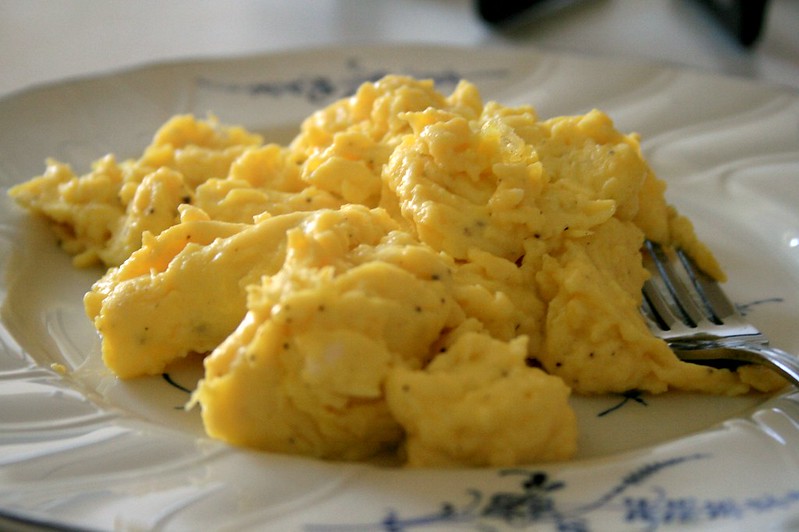Arguably the most popular breakfast item in this country, the scrambled egg is a thing of pure beauty. Coaxing us awake each morning with its pillowy, warm texture, and mild, nutritious savoriness, it’s ready to take on any topping from hot sauce to caviar, eager to nourish and satisfy. This low-calorie, quick-cooking, healthful little package is the perfect way to start the day. And for this, sweet scrambled egg, we are thankful.
We all know that there are about a million different breakfast egg preparations. From poached to fried to soft-boiled, everyone has a favorite. But there’s just something everyone adores about the scramble. Perhaps it’s the no-frills presentation or the way they so perfectly pile on a piece of toast. Whatever the reasons, there are plenty of answers to the question about how to make scrambled eggs. And if you don’t know the basic methods of scrambling an egg, you’re doing this beautiful breakfast staple, and yourself, a disservice.
It should be said, too, that of course, there are many paths that will lead to the nest scrambled eggs, some less traditional than others. The methods we’ll discuss here are the tastiest, creamiest, and best methods. Sure, there are methods we won’t get into here, such as poached scrambled eggs (which is just a scrambled egg recipe for watery, lifeless, tasteless goo, but if that’s your thing, we won’t judge).
These are the best, the tried-and-true, the perfect breakfast-in-bed scrambled eggs. All are delicious, but slightly different in their textures. Of course, you can decide which best suits your personal tastes. For each method below, unless added ingredients are called for, we used four eggs, two tablespoons of milk, two tablespoons of butter, as well as salt and pepper.
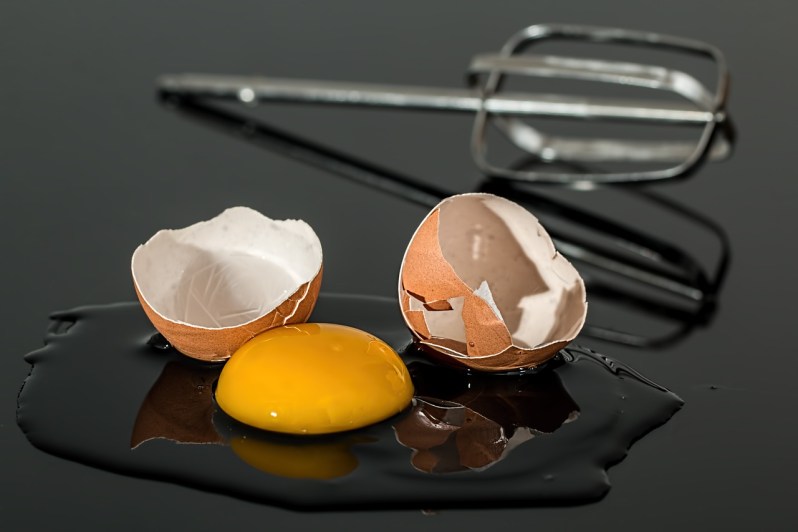
1. The low and slow method
“Low and slow” is a term heard often in the kitchen. And for good reason. When things are cooked slowly, without rush or urgency, they have the time to do what they’re supposed to do, to soak in and release all of their flavors on their own time. Eggs are no exception. By heating the eggs slowly, at a low temperature, they will remain tender. The longer cooking time will create a slow-moving steam that will create a light texture by delicately puffing the eggs.
- For this method, whisk eggs, seasonings, and milk together until yolks and whites are combined.
- Over low-medium heat, place butter in a nonstick skillet.
- When the butter has melted, add the whisked eggs and milk mixture.
- Cook over low heat, stirring occasionally, until curds start to form.
- Continue stirring gently until scrambled eggs have formed completely, about 10 minutes.
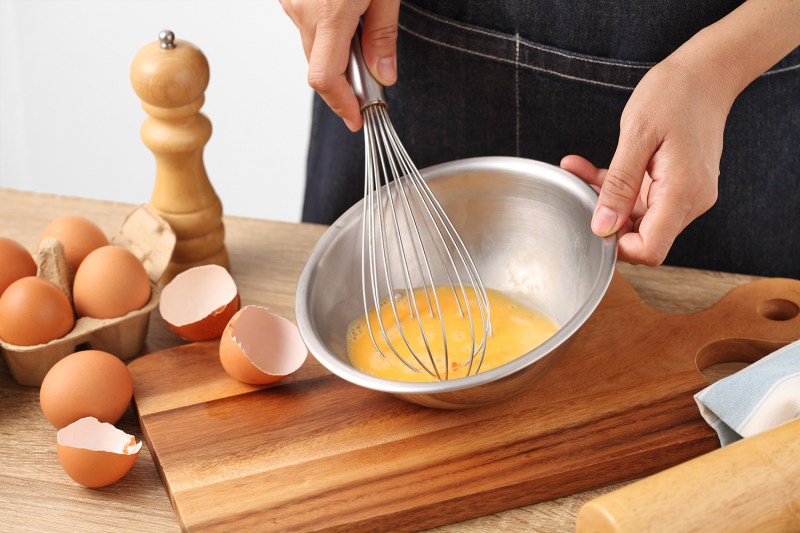
2. The high and fast method
The exact opposite of the low and slow method, this controversial method makes for some pretty good eggs in no time at all. Mornings are rushed for most of us, and sometimes a shortcut is necessary. But this method comes with a warning label. Unlike with “low and slow,” there isn’t much room for error, and close attention must be paid or you’ll end up with an overcooked, brown, smelly mess.
- For “high and fast,” whisk eggs, seasonings, and milk together until yolks and whites are combined.
- Over medium-high heat, place butter in a nonstick skillet.
- When the butter has melted (but not browned!), add the whisked eggs and milk mixture. When the eggs hit the pan, they should immediately start to curdle. Working quickly with a wooden spoon or spatula, fold eggs onto themselves as they form curds, never letting them sit too long on the bottom of the hot pan.
- Cook until preferred doneness.
Again, this method is both riskier and not as delicious as its opposite method, but sometimes practicality comes first. And in this case, it makes for some pretty good eggs. So long as you do it right. (No pressure.)

3. The Gordon Ramsay method
This method has gotten a lot of attention recently, thanks to subtle-as-a-sledgehammer Chef Gordon Ramsay. It produces a slightly different scrambled egg than most Americans are used to. This “new” style of creamier, wetter, runnier scrambled eggs is attributed to Chef Ramsay in this country, but it’s how the French have been making them forever. If you’re unfamiliar with this process, it may seem a bit strange. It’s more time-consuming and laborious than the other methods on this list, but those who prefer this preparation seem to have converted completely.
- For this method, melt butter in a saucepan over high heat.
- Add whisked eggs (no milk or seasoning), and stir constantly until they begin to thicken.
- After 30 seconds, remove the saucepan from the heat but continue to stir for about 10 seconds.
- Keep repeating this process for about three minutes.
- Remove from heat, season, and slowly stir in 1 tablespoon of creme fraiche or sour cream.
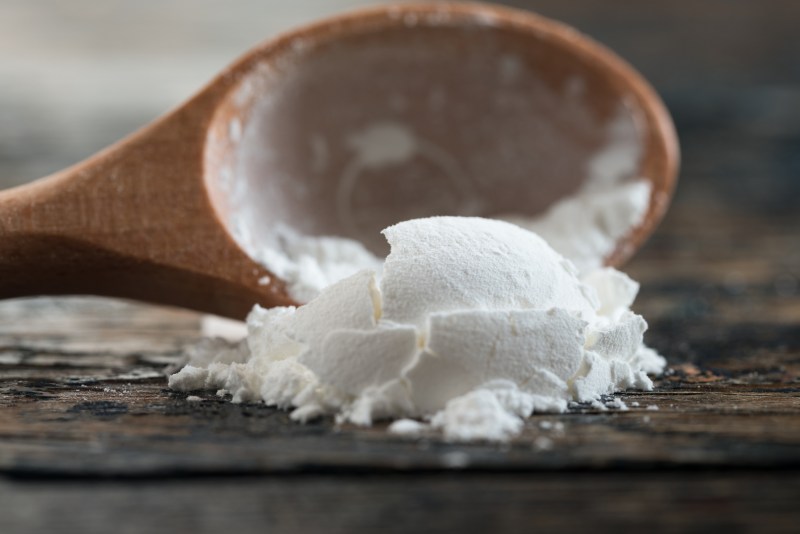
4. The cornstarch method
For this method, a cornstarch slurry is whisked in with eggs before cooking. The cornstarch helps to stabilize the eggs and prevents them from setting up too firmly or overcooking. The result is lighter-than-air, never rubbery, perfectly moist, and pillowy eggs.
- For this method, whisk eggs together and set aside.
- In a separate bowl, whisk 2 teaspoons of cornstarch together with 2 tablespoons of milk, then add to the eggs.
- Over low-medium heat, place butter in a non-stick skillet.
- When the butter has melted, add the egg mixture.
- Cook over low to medium heat, stirring occasionally, until curds start to form.
- Continue stirring gently until scrambled eggs have formed completely, about 5 minutes.

5. The scramble in the pan method
This method is pretty self-explanatory and is great if you like your scrambled eggs a bit more separated. Maybe you like a bite of scrambled eggs that are all yolk, then a few that are all white. If that’s your style, this method is the one for you. You’ve probably seen eggs cooked this way at a diner on a huge flat-top griddle by some beefed-up, tattooed chef simultaneously slinging hash and pouring pancake batter.
The key here is to not whisk your eggs beforehand.
- Over low-medium heat, place butter in a non-stick skillet.
- When the butter has melted, crack in your eggs and whisk only a bit, until yolks are broken.
- Cook over low to medium heat, stirring occasionally, until curds start to form.
- Continue stirring gently until scrambled eggs have formed completely, about 5 minutes. There should be noticeable differences in color, with obvious yellow bits and white bits.

3 tips for making the perfect scrambled eggs
Here are three top tips for making the perfect scrambled eggs, no matter the method you choose above.
- Use fresh, high-quality eggs. The fresher the eggs, the better your scrambled eggs will turn out.
- Don’t overcrowd the pan. If you overcrowd the pan, the eggs will steam instead of scramble.
- Add a splash of milk or cream. This is optional, but it will help to make your eggs more fluffy and creamy. Adding milk or cream also helps prevent the eggs from sticking to the pan.
Here’s more info on adding milk to scrambled eggs. (Note that some of the methods above include adding milk.) Some people like the creamier texture and richer flavor that milk adds, while others prefer the more delicate flavor and fluffier texture of eggs made without milk. Here are a few things to keep in mind when adding milk to your scrambled eggs.
- Milk can make your eggs easier to overcook. If you’re not careful, milk can cause your eggs to become tough and rubbery.
- Milk can also make your eggs less flavorful. The milk can dilute the flavor of the eggs, especially if you add too much.
- If you do decide to add milk to your scrambled eggs, use a small amount, no more than 1 tablespoon per egg. You can also add other liquids, such as water, cream, or half-and-half, to achieve the desired texture and flavor.
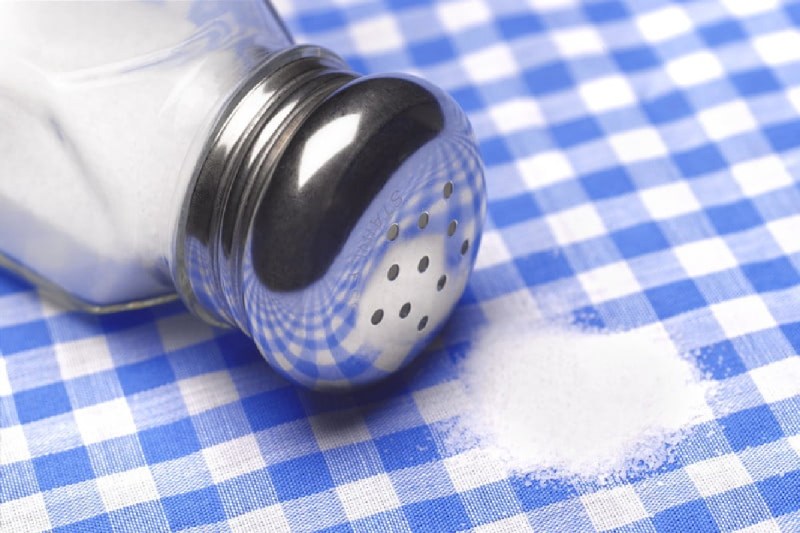
A note on seasoning eggs
There’s been a claim going around for a while now that salting eggs before cooking them is a bad move. The argument here is that the salt breaks down and toughens the eggs, ruining their texture. Don’t fall for this tomfoolery. The truth is, after many blind taste tests, this theory has proven completely false. If anything, salt added to eggs before cooking actually improved texture, making them softer and more velvety than their non-salted counterparts. So whichever of these scrambled eggs styles suits you best, make sure and season it up!
